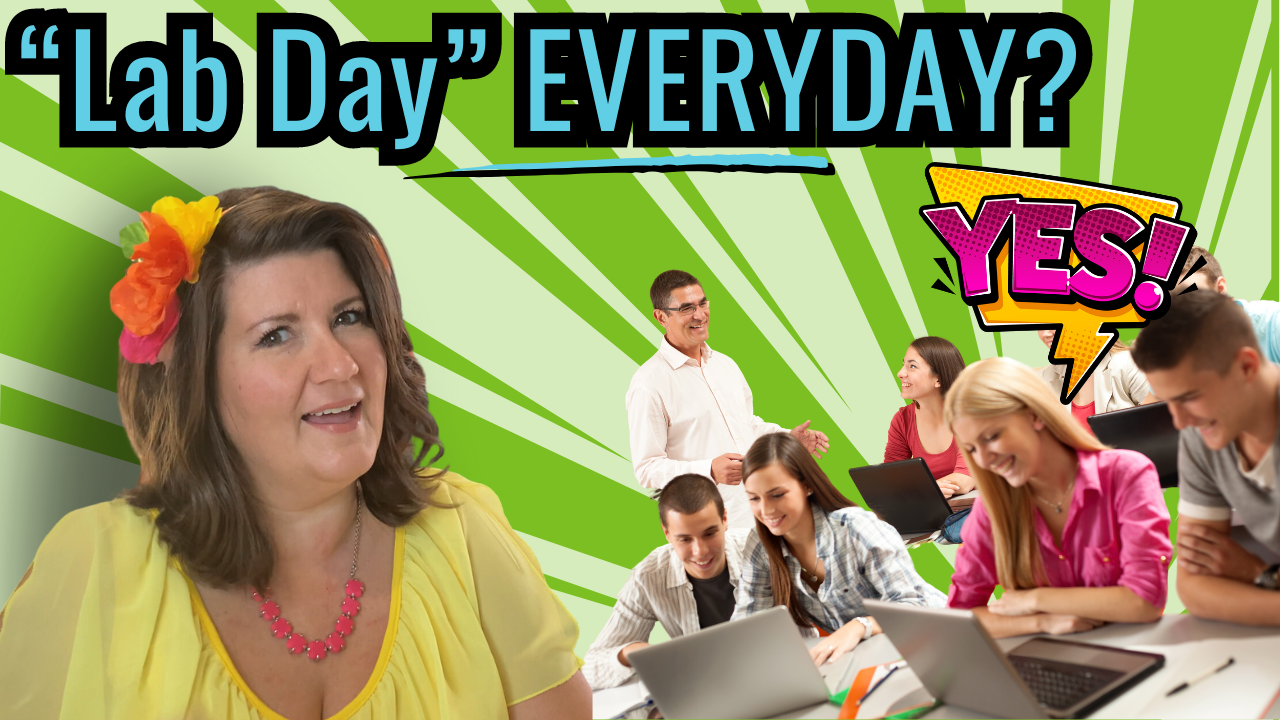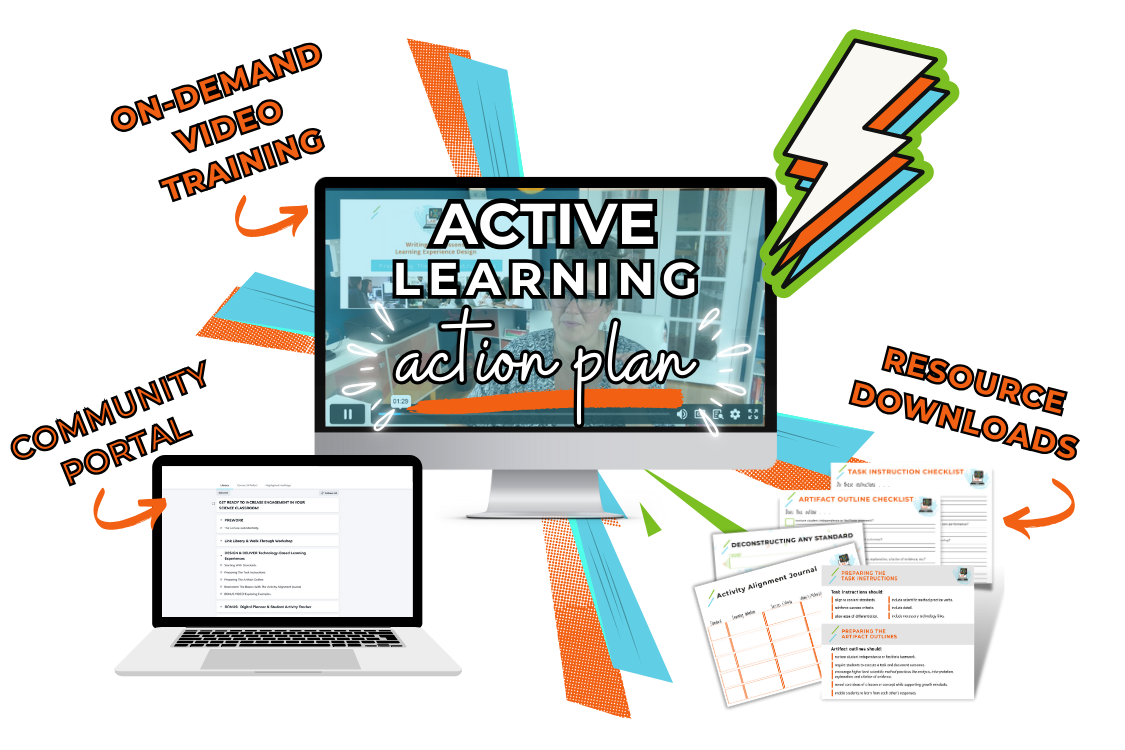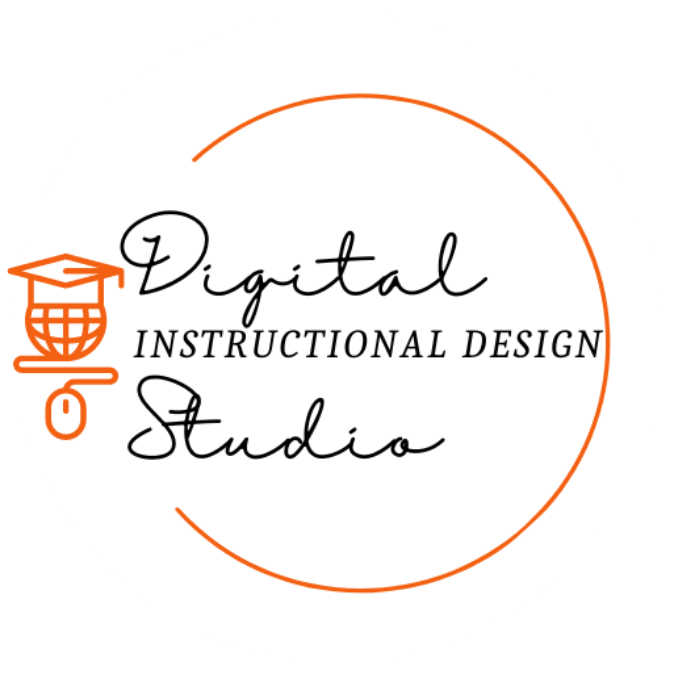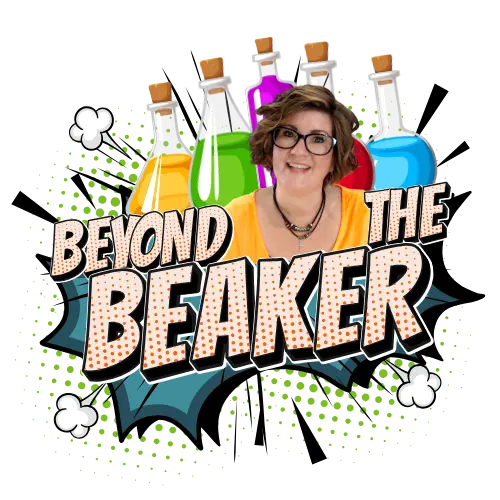Active learning in science is more than just a buzzword! It’s a transformative approach that brings energy and engagement to the classroom.
You love teaching on lab day because that’s when science truly comes alive. Problem-solving, teamwork, and the excitement of discovery dominate the day! Wouldn’t you love to experience that same level of engagement every day?
If your answer is, “YES, PLEASE?!”, this article was written for you.
Read on to discover how active learning principles can be applied to your science curriculum and delivery approach.
If you’d rather watch or listen, I’ve got you covered on YouTube and via podcast:
What Active Learning Is Not
When you search for active learning, you might encounter an overwhelming number of results that don’t resonate with this discussion.
There are many resources out there that suggest active learning requires students to be physical activity. Marching, gesturing, or even singing out content are provided as examples.
Another misconception is that active learning lives in higher education institutions, like medical schools. There, students take ownership of their learning through note-taking and self-directed study.
While these methods are, indeed, examples of active learning, they don’t reflect the broader sense of the term.
Why Active Learning Is Perfectly Suited For Science
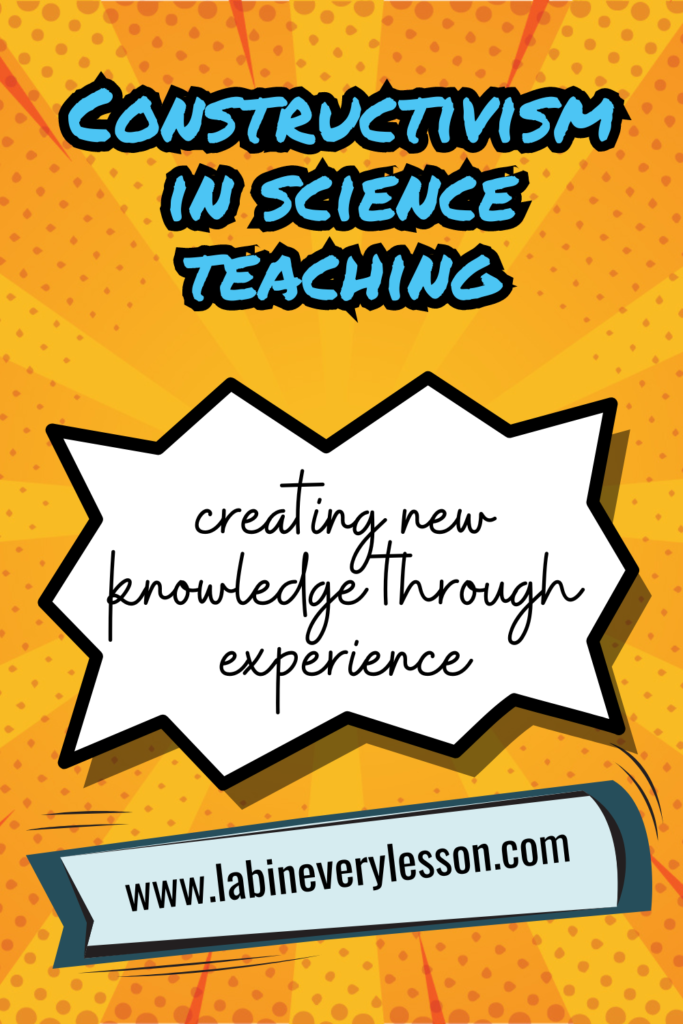
Active learning in science is deeply rooted in a pedagogy known as constructivism.
It’s about creating new knowledge through experience.
This approach resonates with how we naturally learn from a young age, such as discovering that a campfire is hot or that snowflakes are cold and wet.
In the science classroom, constructivism allows students to build their understanding by engaging directly with the material, making learning both meaningful and memorable. As secondary science teachers, we most closely employ constructivist approaches on “lab day.”
We love the benefits of “lab”!
- Exploration-driven activities are active by their very nature. Students stay engaged because they don’t have to sit still or remain quiet.
- The work students do on “lab day” provides an opportunity to practice the scientific method. They collect observations and build upon them, study them, think about them, gather more with variations, and discuss them.
- Discovery is collaborative. Students learn more by considering the input and ideas of others observing the same systems and experimental results.
- The rigor and challenge of examining a system to solve a problem or answer a question develops higher-order thinking skills, such as analysis and reflection.
All these features of active, lab-style learning encourages student ownership of the process. With consistency, students learn to set their own goals, self-correct, and determine the next steps they need to take to reach their goals.
Active Learning In Science Requires More Than “Lab Days”
Even though we incorporate these “labs” and “active learning” moments into our science curricula, I petition to you that they aren’t the norm.
We spend most of our time talking and demonstrating, explaining everything we know, modeling problem-solving, and expecting students to dutifully take notes and ask questions when they don’t understand.
Only once a week or less, we set aside “lab time” when students follow instructions related to a system they’ve already studied.
After lab, we expect students to use the evidence they collected from their observations and the reasoning they learned from our lectures to draw focused conclusions and make claims in response to specific questions.
While this approach checks many benefit-boxes, it doesn’t allow our students to learn new things from their observations.
In active learning and constructivism, the focus shifts towards a learner-centered or student-centered approach rather than a teacher-centered approach. Let’s consider a direct comparison of the two:
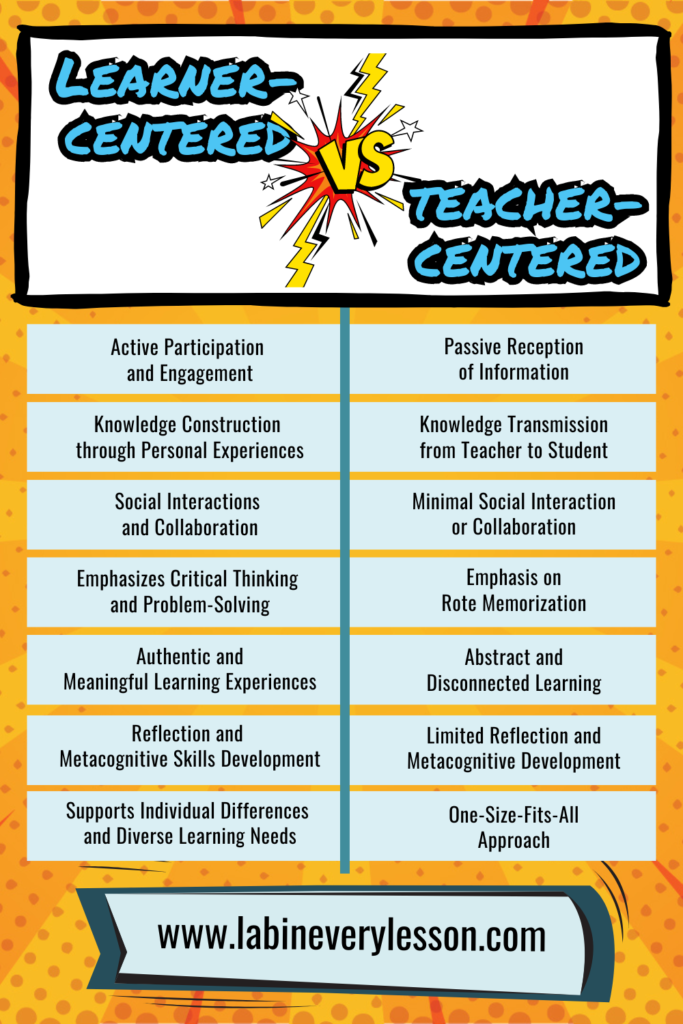
Active Participation vs. Passive Reception
In learner-centered approaches, students actively participate, while in a teacher-centered approaches, they passively receive information. This can be seen as the difference between a lab (active learning) and a lecture (passive learning).
Knowledge Construction vs. Knowledge Transmission
Learner-centered approaches emphasize knowledge construction through personal experience, but teacher-centered approaches focus on knowledge transmission from teacher to student.
Student Interactions vs. Teacher Monologues
Learner-centered environments encourage and foster student interactions that are largely absent in teacher-centered settings where long lectures leave little room for student interaction.
Critical Thinking and Problem Solving vs. Memorization
Learner-centered approaches allow students to work understand concepts by navigate complex scenarios and solving problems. This is in stark contrast to more common teacher-centered methods that require memorization of complex information.
Reflection and Metacognitive Skills vs. Limited Reflection
Learner-centered approaches provide the opportunity for reflection, self-reflection, self-assessment, and self-correction. Unfortunately, limited opportunities for this type of metacognitive work exist in teacher-centered classrooms.
Individual Differences vs. One-Size-Fits-All
Notably, learner-centered approaches accommodate individual differences and diverse learning needs, meeting students where they are. Perhaps this is the highest cost of teacher-centered approaches, because they are always a one-size-fits-all model, which doesn’t support individual student needs.
By shifting from a teacher-centered to a learner-centered approach, we can transform our students into active learners rather than passive listeners, fostering a more engaging and effective learning environment.
Some Popular Approaches to Active Learning In Science
Let’s consider a few of the most popular active learning / constructivist-style approaches you might be able to use more consistently than once a week in an effort to phase-out lecture:
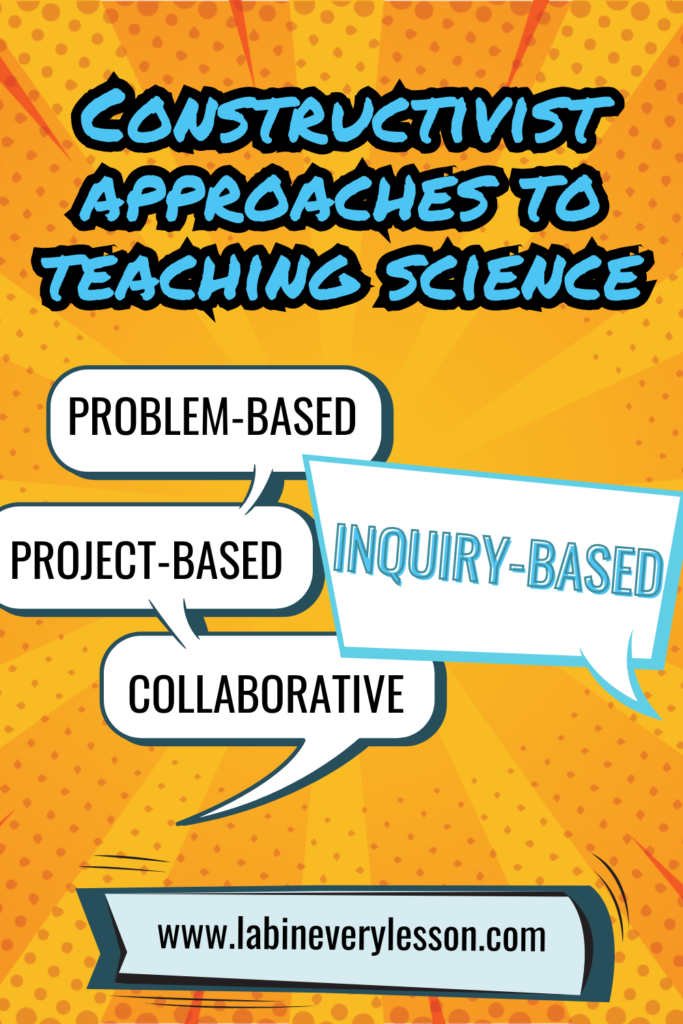
PROBLEM-BASED, ACTIVE LEARNING IN SCIENCE
Problem-Based Learning (PBL) is an approach where students work together to solve real-world problems. In PBL, students analyze the problem, generate hypotheses, gather information, propose solutions, and evaluate their effectiveness. This method is as close to real scientific practice as you can get in the classroom, making it an excellent strategy for fostering deep understanding and engagement.
PROJECT-BASED, ACTIVE LEARNING IN SCIENCE
Project-Based Learning involves complex tasks over an extended period. This approach is perfect for STEM and STEAM curricula, allowing students to delve deeply into topics, explore different perspectives, and apply their knowledge in meaningful ways. While collaboration is common in project-based learning, it isn’t always necessary, giving students the flexibility to work independently if needed.
COLLABORATIVE, ACTIVE LEARNING IN SCIENCE
Collaborative learning emphasizes meaningful discussions and knowledge sharing through social interaction. It encourages students to work together to achieve shared learning goals, solve problems, and create something collectively. In the science classroom, this might involve debates on the societal impacts of scientific advancements or working in teams on complex engineering tasks.
INQUIRY-BASED, ACTIVE LEARNING IN SCIENCE
Inquiry-Based Learning is a personal favorite because it engages students in asking questions, gathering information, conducting investigations, and constructing meaning through their own exploration. This method aligns closely with the scientific method and helps students develop critical thinking and problem-solving skills. Inquiry-based learning can be tailored to suit every student, making it a versatile tool for any science teacher.
Examples from My Chemistry Classroom
Here are a few examples of how I incorporate active learning into my chemistry lessons:
Understanding Chemical Bonds
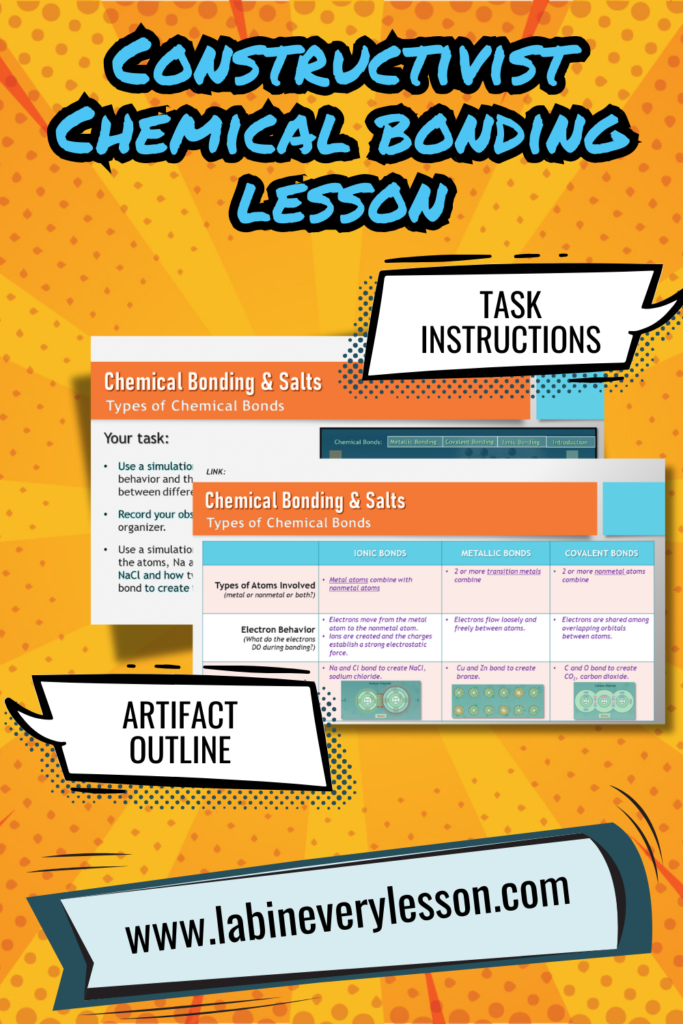
In this lesson, students explore ionic, covalent, and metallic bonding through an interactive online tutorial. They document their observations and compare the different types of bonds. This discovery-based approach helps them experience complex concepts in a way that a lecture alone could not.
Exploring Chemical Reactions
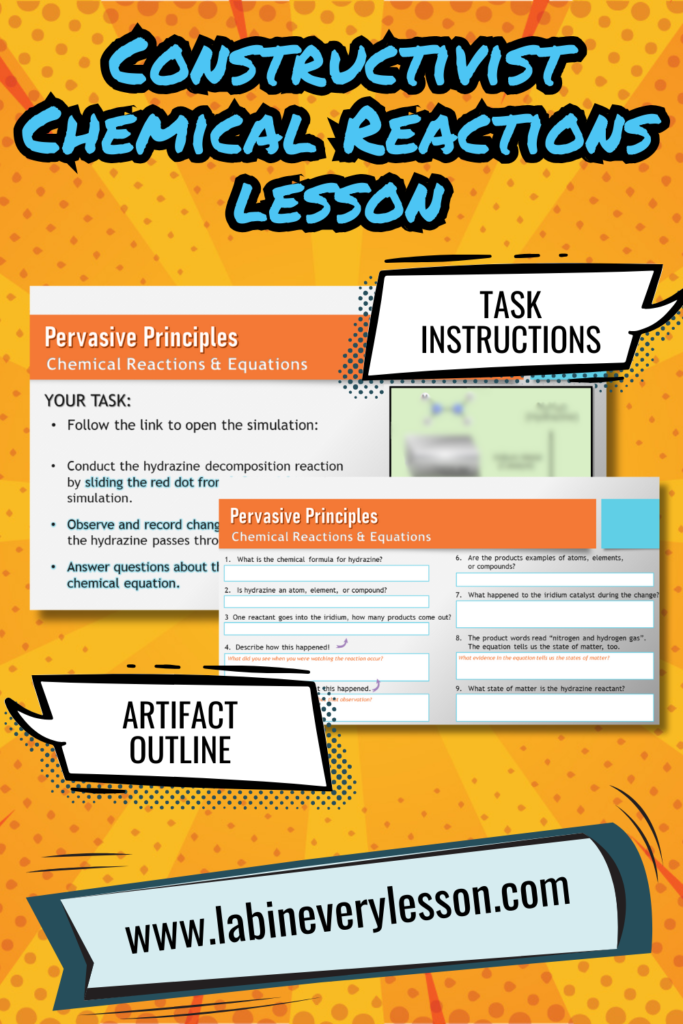
Another lesson involves a simulation where students observe the decomposition of hydrazine. They document their observations, interpret the results, and understand the chemical change happening in real-time. This type of activity allows students to control their learning pace and engage deeply with the material.
Learning About Intermolecular Forces

Students explore hydrogen bonding, dipole-dipole interactions, and London dispersion forces through a dynamic slideshow. They take notes and discuss how these forces affect molecular properties. This activity combines literacy with dynamic animations, helping students connect theory with real-world applications.
Explore this concept more
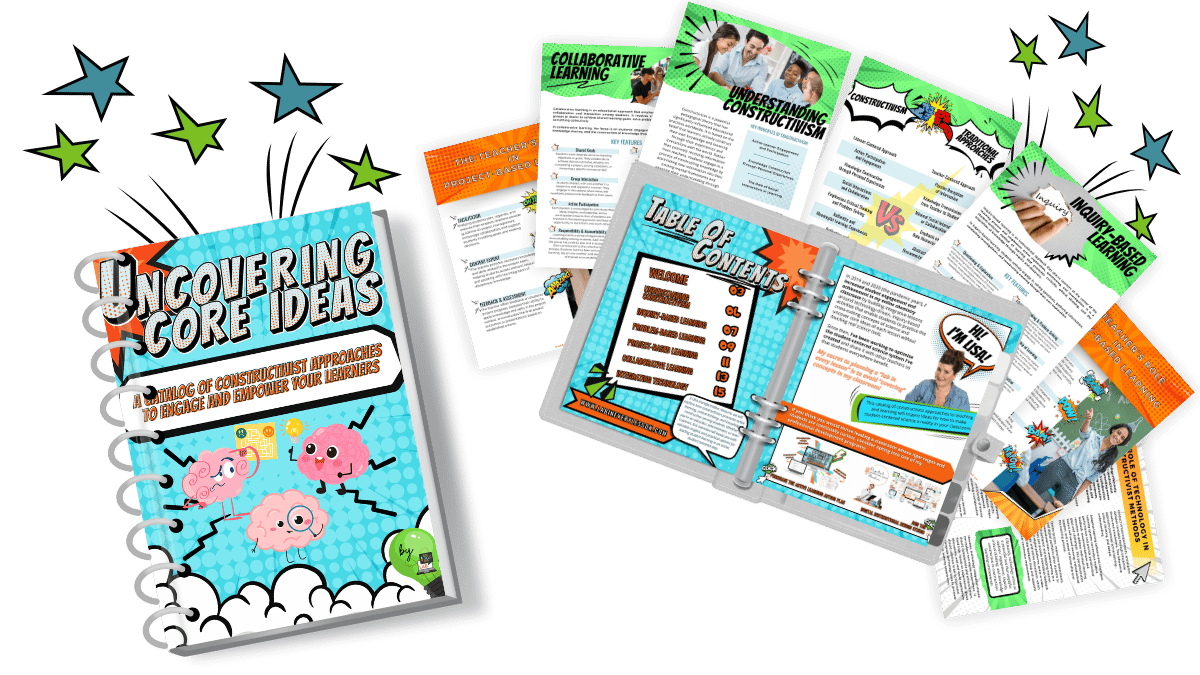
For more information on the constructivist approaches described here, your role as a teacher in each of those classrooms, and the added impact technology could have, download my free e-book, “Uncovering Core Ideas for Active Learning in Science”.
What Action Will you Take?
As you can tell from the variety of sources I used to create the activities outlined here, IT DOESN’T MATTER WHICH SPECIFIC SCIENCE CONTENT YOU TEACH.
If you know the content well, you can find or even create a source for your students to observe, so they can use it to gather information and construct meaning from the data they collect. THEN, you can deliver active learning in science EVERYDAY!
My Active Learning Action Plan can help you quickly learn how to build inquiry-based activities so that you can easily include MORE ACTIVE LEARNING in your classroom, lecture less, and keep that lab-day love alive!

